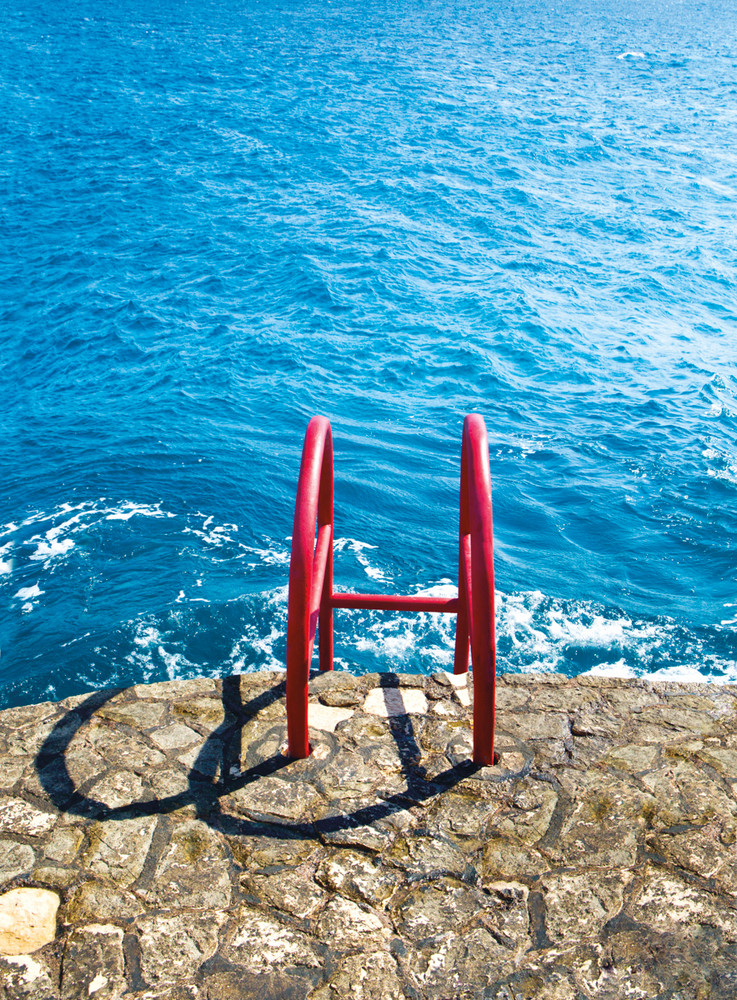We may earn revenue from the products available on this page and participate in affiliate programs.
We all have a unique approach when it comes to planning a vacation. Whether we’re booking a trip based on the popularity of the destination, a special occasion, or simply to cure wanderlust, the weeks or months leading up to it will typically involve hours of research and preparation—unless you’re the fly-by-the-seat-of-your-pants type, in which case, good luck.
These methods inform the individual experiences we have in any given destination, regardless if it’s our first or 10th time there. And while curating an itinerary may tend to revolve around popular attractions, we’re all for digging a bit deeper to uncover the hidden gems.So how does one actually achieve that? We tapped the members of team Domino for the tried-and-true tips that take their travels to the next level. Here’s what we learned.

Before You Go
Make Google Drive your best friend
Digital editor Rebecca Deczynski begins her travel prep by compiling a master document composed of a complete itinerary, restaurant recommendations, and places of interest—a color-coded Google Map highlighting places of interest goes without saying. To top things off, Deczynski sets up a Google Sheet to track shared expenses as well.
“Sure, it may sound like overplanning, but it helps you to manage your time so you end up with more precious hours for spontaneity.”

Allow the neighborhoods to guide your itinerary
Sporadically jumping from one end of the city to the other, all in the course of one day, isn’t always the most efficient use of your time, especially if you’re wasting hours stuck in traffic.
Senior social media editor Alyssa Clough suggests mapping out your points of interest and curating the day’s itinerary to revolve around specific neighborhoods. “Once I’ve assembled a list, I split my days by neighborhoods, so each day is spent hitting restaurants, design shops, museums, and vintage stores in one area. I like to walk everywhere and experience the city I’m in on foot, so it’s more convenient.”
Map out secondary points of interest
After you’ve hit all the museums and sights of the city, focus on the spots that will spark joy—the ones that will help you better integrate yourself within the locale.
“The first thing I do when I go somewhere new is map out all the best vintage shops,” says associate digital editor Elly Leavitt. “I always make it a point to buy one thing from a new city (usually a ceramic bowl or vase, because I am a hoarder) and finding unique pieces is significantly easier in vintage or antique stores.”

Prepare for a lack of internet
Wifi isn’t always guaranteed, especially if you’re traveling to an under-developed locale. Leavitt suggests planning for this ahead of your trip: “When you arrive in the middle of the night to a foreign country whose language you do not understand and have no idea how to get to your hotel, it becomes a necessary one. Have all addresses and phone numbers written down.”
Additionally, you may screenshot directions to the hotel or your points of interest, via Google Maps. “I always download an offline map of the area I’ll be in, in case I lose internet,” says digital editor Anna Kocharian. “The map of each city is categorized by restaurants, bars, must-see design shops, and my hotel.”
Pro-tip: These maps double as travel guides, which you can easily share with friends later.

Packing and En Route
Bulk up and then edit down
If you’re the type of traveler who is stuffing last-minute gear into a suitcase while halfway out the door, listen up. Digital editorial assistant Lydia Geisel packs according to a self-inflicted “three-day rule,” regardless if she’s traveling for a long weekend or a week.
“I let myself take anything out of my closet that’s even a ‘maybe I’ll wear this’ piece. After letting it sit for a few days, I go back to my pile and cut every category (jeans, jackets, dresses, etc.) in half,” she notes. “When you pack on the fly, you’re more tempted to overpack.”

Downsize the travel-size
In lieu of hoarding your expansive beauty collection and taking up valuable luggage space, take out sample sizes of the essentials. Contact lens cases are key here. “I put masks, face wash, lotions, SPF, etc. into the tiny lens case, it’s the perfect amount and size for a week (or more) of getaway beauty products,” says wellness and beauty editor Kristin Limoges. Label the bottom of the lens case with a Sharpie, to help you easily differentiate the specific product.
“I prefer this over actual travel-size products because they cost money and are either too large or too small. With this, you know exactly the amount of product in it,” she adds.

Once You’re There
Ask the locals
Surely few know a city as well as its locals, so take advantage of it! Ask the wait staff at a restaurant or coffee shop or the employees at local boutiques for their favorite spots around the city. “Cool people who work at the cool spots I want to experience always have recommendations for even cooler spots,” says Clough. “It’s really a no-fail formula.”

